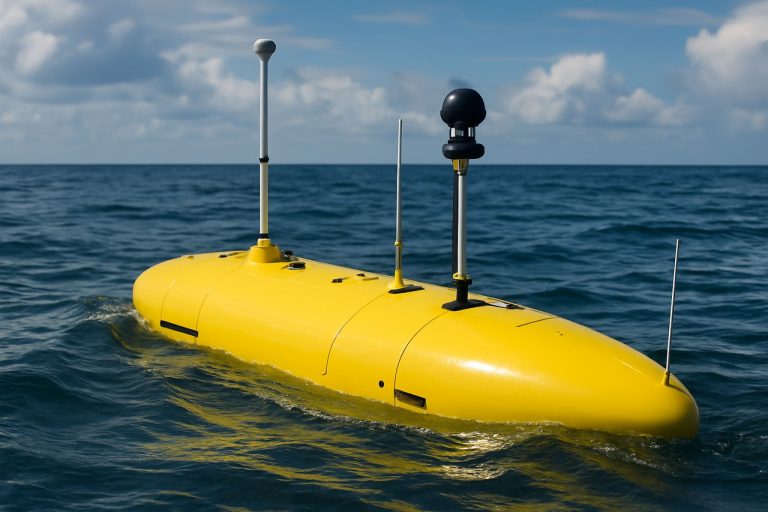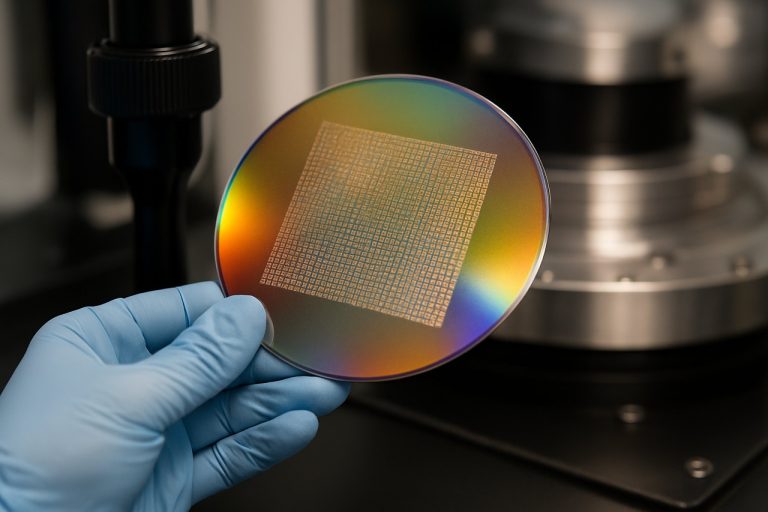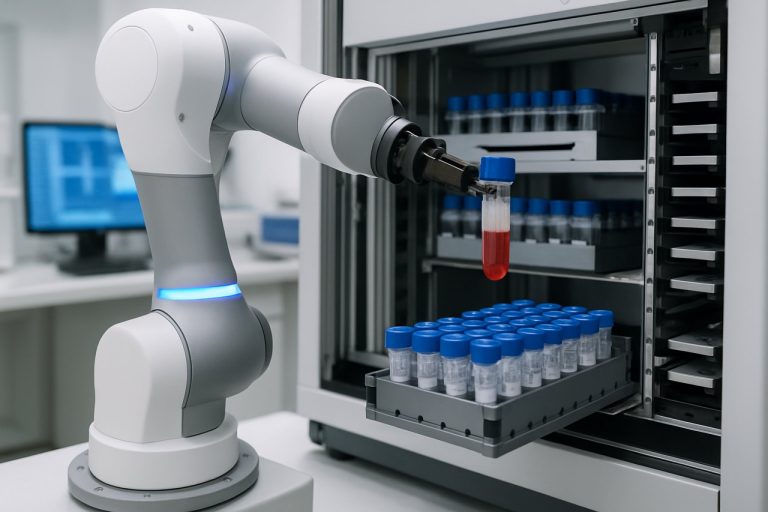
Robotic Biobanking Systems Market Report 2025: In-Depth Analysis of Automation, Growth Drivers, and Global Trends. Explore Market Size, Leading Technologies, and Strategic Opportunities for the Next 5 Years.
- Executive Summary and Market Overview
- Key Technology Trends in Robotic Biobanking Systems
- Competitive Landscape and Leading Players
- Market Growth Forecasts and Revenue Projections (2025–2030)
- Regional Analysis: Market Dynamics by Geography
- Future Outlook: Emerging Applications and Innovations
- Challenges, Risks, and Strategic Opportunities
- Sources & References
Executive Summary and Market Overview
Robotic biobanking systems represent a transformative advancement in the management, storage, and retrieval of biological samples for research and clinical applications. These automated solutions integrate robotics, advanced software, and environmental controls to ensure the integrity, traceability, and scalability of biobanking operations. As of 2025, the global market for robotic biobanking systems is experiencing robust growth, driven by the increasing demand for high-throughput sample processing, the expansion of precision medicine, and the need for standardized, error-free biorepository management.
According to recent market analyses, the global robotic biobanking market is projected to reach USD 2.1 billion by 2025, growing at a compound annual growth rate (CAGR) of approximately 12% from 2020 to 2025. This growth is fueled by the rising prevalence of chronic diseases, the surge in genomics and proteomics research, and the proliferation of large-scale population studies requiring efficient sample handling and data management MarketsandMarkets. North America and Europe currently dominate the market, owing to well-established healthcare infrastructure, significant investments in life sciences, and the presence of leading biobanking organizations. However, Asia-Pacific is emerging as a high-growth region, supported by expanding research initiatives and government funding in countries such as China, Japan, and South Korea Fortune Business Insights.
Key industry players—including Hamilton Company, Thermo Fisher Scientific, and Brooks Automation—are investing heavily in R&D to enhance automation capabilities, improve sample tracking, and integrate artificial intelligence for predictive maintenance and workflow optimization. The adoption of robotic biobanking systems is further accelerated by the need to comply with stringent regulatory standards for sample quality and data security, as well as the growing emphasis on reproducibility in biomedical research Grand View Research.
- Market drivers: Precision medicine, high-throughput research, regulatory compliance
- Challenges: High initial investment, integration with legacy systems, data management complexity
- Opportunities: AI-driven automation, cloud-based biobanking, expansion in emerging markets
In summary, the robotic biobanking systems market in 2025 is characterized by rapid technological innovation, expanding global adoption, and a pivotal role in supporting next-generation biomedical research and healthcare delivery.
Key Technology Trends in Robotic Biobanking Systems
Robotic biobanking systems are rapidly transforming the landscape of biospecimen management, driven by the need for higher throughput, improved sample integrity, and enhanced data traceability. As of 2025, several key technology trends are shaping the evolution and adoption of these systems in research, clinical, and pharmaceutical settings.
- Advanced Automation and Integration: Modern robotic biobanking platforms are increasingly leveraging advanced robotics and automation to streamline sample handling, aliquoting, and storage. Integration with laboratory information management systems (LIMS) enables seamless data capture and real-time tracking, reducing manual errors and ensuring regulatory compliance. Companies such as Hamilton Company and Brooks Automation are at the forefront, offering modular systems that can be tailored to specific biobanking workflows.
- Artificial Intelligence and Machine Learning: AI-driven analytics are being incorporated to optimize storage conditions, predict equipment maintenance needs, and enhance sample retrieval efficiency. Machine learning algorithms can analyze historical usage patterns to forecast demand and automate inventory management, as highlighted in recent market analyses by Frost & Sullivan.
- Ultra-Low Temperature and Cryogenic Storage: The demand for long-term preservation of sensitive biological materials is driving innovation in ultra-low temperature (ULT) and cryogenic robotic storage solutions. New systems are capable of maintaining temperatures as low as -196°C, with automated retrieval arms designed to minimize freeze-thaw cycles and preserve sample viability, as reported by Thermo Fisher Scientific.
- Remote Monitoring and IoT Connectivity: The integration of Internet of Things (IoT) technologies allows for remote monitoring of storage conditions, equipment status, and environmental parameters. Real-time alerts and predictive maintenance features are reducing downtime and safeguarding valuable biospecimens, according to insights from MarketsandMarkets.
- Scalability and Modular Design: To accommodate growing biorepositories, manufacturers are focusing on scalable, modular robotic systems that can expand as sample volumes increase. This flexibility is particularly important for biobanks supporting large-scale genomics and population health studies, as noted by Grand View Research.
These technology trends are collectively enhancing the efficiency, reliability, and scalability of robotic biobanking systems, positioning them as critical infrastructure for precision medicine, translational research, and global health initiatives in 2025 and beyond.
Competitive Landscape and Leading Players
The competitive landscape of the robotic biobanking systems market in 2025 is characterized by a mix of established automation giants, specialized life sciences technology firms, and emerging innovators. The market is witnessing intensified competition as biobanks, pharmaceutical companies, and research institutions increasingly demand high-throughput, reliable, and scalable sample management solutions. Key players are differentiating themselves through technological advancements, integration capabilities, and comprehensive service offerings.
Leading the market are companies such as Hamilton Company, whose STAR and Verso platforms are widely adopted for their modularity and robust automation features. Brooks Automation (now part of Azenta Life Sciences) continues to expand its portfolio with advanced automated storage and retrieval systems, focusing on ultra-low temperature sample management and seamless informatics integration. Thermo Fisher Scientific leverages its broad life sciences footprint to offer end-to-end biobanking solutions, including robotic sample handling, tracking, and data management.
Other notable players include TITAN Corporation, which is gaining traction with customizable robotic platforms tailored for both large-scale and niche biobanking needs, and Labcold, which is expanding its presence in automated cryogenic storage. Donaldson Company and LabCube are also making strategic investments in automation and digitalization to capture market share.
Strategic partnerships and acquisitions are shaping the competitive dynamics. For example, Azenta Life Sciences (formerly Brooks Life Sciences) has acquired several niche automation firms to enhance its biobanking automation capabilities and global reach. Meanwhile, collaborations between automation vendors and software providers are enabling more integrated, data-driven biobanking workflows.
Innovation remains a key competitive lever. Companies are investing in AI-driven sample tracking, cloud-based biobank management, and IoT-enabled monitoring to address evolving customer needs for security, compliance, and scalability. The entry of new players, particularly from Asia-Pacific, is expected to intensify competition and drive further technological advancements in 2025 and beyond.
Market Growth Forecasts and Revenue Projections (2025–2030)
The global market for robotic biobanking systems is poised for robust growth between 2025 and 2030, driven by increasing demand for high-throughput sample management, precision medicine, and automation in life sciences research. According to recent projections, the market is expected to expand at a compound annual growth rate (CAGR) of approximately 12–15% during this period, with total revenues anticipated to surpass USD 2.5 billion by 2030, up from an estimated USD 1.1 billion in 2025. This growth trajectory is underpinned by the rising adoption of automated storage and retrieval solutions in biorepositories, pharmaceutical R&D, and clinical laboratories worldwide.
Key factors fueling this expansion include the escalating volume of biological samples generated by genomics and proteomics research, the need for stringent sample integrity, and the growing prevalence of chronic diseases necessitating large-scale biobanking initiatives. The integration of advanced robotics, artificial intelligence, and Internet of Things (IoT) technologies is further enhancing the efficiency and scalability of biobanking operations, reducing manual errors and operational costs.
Regionally, North America is projected to maintain its dominance in the robotic biobanking systems market through 2030, supported by significant investments in biomedical research infrastructure and the presence of leading biobank operators. However, the Asia-Pacific region is expected to witness the fastest growth, propelled by expanding healthcare infrastructure, government-backed biobanking projects, and increasing pharmaceutical R&D activities in countries such as China, Japan, and South Korea.
- According to MarketsandMarkets, the global biobanking market (including automation) is set to reach USD 4.6 billion by 2027, with robotic systems comprising a significant share of this growth.
- Fortune Business Insights highlights the increasing role of automation and robotics in driving market expansion, particularly in large-scale population biobanks and pharmaceutical repositories.
- Industry leaders such as Hamilton Company and Brooks Automation are investing in next-generation robotic platforms, further accelerating market adoption and revenue growth.
Overall, the period from 2025 to 2030 is expected to mark a transformative phase for the robotic biobanking systems market, characterized by technological innovation, expanding application scope, and increasing global penetration.
Regional Analysis: Market Dynamics by Geography
The global market for robotic biobanking systems in 2025 is characterized by distinct regional dynamics, shaped by varying levels of healthcare infrastructure, research funding, and regulatory environments. North America remains the dominant region, driven by robust investments in biomedical research, a high concentration of biobanks, and early adoption of automation technologies. The United States, in particular, benefits from strong support by organizations such as the National Institutes of Health and a thriving pharmaceutical sector, fostering demand for advanced robotic biobanking solutions. Canada also contributes to regional growth, leveraging government-backed genomics initiatives and collaborations with academic institutions.
Europe follows closely, with countries like Germany, the United Kingdom, and Sweden leading the adoption of robotic biobanking systems. The presence of large-scale biobanking networks, such as those coordinated by BBMRI-ERIC, and stringent regulatory frameworks for biospecimen management drive the need for automation to ensure compliance and efficiency. The European Union’s emphasis on cross-border research and data harmonization further accelerates the deployment of standardized robotic systems across member states.
Asia-Pacific is emerging as a high-growth region, propelled by expanding healthcare infrastructure, increasing investments in life sciences, and government initiatives to modernize biobanking. China and Japan are at the forefront, with significant funding for precision medicine and large-scale population health studies. The Chinese government’s support for biobanking, as outlined in its national health strategies, and Japan’s focus on regenerative medicine and personalized healthcare, are key factors stimulating market expansion. Australia and South Korea are also notable for their advanced research ecosystems and adoption of automation in biorepositories.
In contrast, Latin America, the Middle East, and Africa represent nascent markets for robotic biobanking systems. Growth in these regions is hindered by limited funding, infrastructural challenges, and a lack of standardized biobanking practices. However, increasing participation in international research collaborations and gradual improvements in healthcare infrastructure are expected to create new opportunities for market entrants over the coming years.
Overall, regional disparities in the adoption of robotic biobanking systems are expected to persist in 2025, with mature markets focusing on system upgrades and integration, while emerging regions prioritize capacity building and initial automation deployments. Strategic partnerships, government funding, and harmonization of regulatory standards will be critical in shaping the competitive landscape across geographies.
Future Outlook: Emerging Applications and Innovations
The future outlook for robotic biobanking systems in 2025 is shaped by rapid technological advancements, expanding application areas, and increasing integration with digital health ecosystems. As biobanks become central to precision medicine, population genomics, and translational research, the demand for automation and robotics is accelerating. Robotic biobanking systems are expected to move beyond traditional sample storage and retrieval, enabling new paradigms in sample processing, data integration, and real-time analytics.
Emerging applications include the use of robotics for high-throughput sample aliquoting, automated nucleic acid extraction, and integration with next-generation sequencing (NGS) workflows. These innovations are driven by the need for reproducibility, scalability, and contamination-free handling, especially as biobanks manage millions of biospecimens for large-scale studies. For example, the integration of artificial intelligence (AI) with robotic systems is enabling predictive maintenance, dynamic inventory management, and adaptive sample tracking, reducing operational costs and error rates Thermo Fisher Scientific.
Another key trend is the convergence of robotic biobanking with digital pathology and remote diagnostics. Automated systems are being designed to interface directly with laboratory information management systems (LIMS), facilitating seamless data exchange and supporting decentralized biobanking models. This is particularly relevant for global research consortia and multi-site clinical trials, where standardized, automated handling ensures sample integrity and regulatory compliance Brooks Life Sciences.
Innovations in cryogenic robotics are also expanding the range of biospecimens that can be preserved, including living cells, organoids, and complex tissue samples. These capabilities are critical for emerging fields such as regenerative medicine and cell therapy, where sample viability and traceability are paramount Hamilton Company. Furthermore, the adoption of Internet of Things (IoT) sensors and cloud-based monitoring is enabling real-time environmental control and remote system diagnostics, further enhancing reliability and scalability.
Looking ahead to 2025, the market is expected to see increased collaboration between biobanking solution providers, healthcare institutions, and technology companies. This will likely accelerate the development of interoperable, modular robotic platforms tailored to diverse research and clinical needs. As a result, robotic biobanking systems are poised to play a pivotal role in advancing biomedical research, personalized medicine, and global health initiatives Grand View Research.
Challenges, Risks, and Strategic Opportunities
Robotic biobanking systems are transforming the storage, retrieval, and management of biological samples, but their adoption in 2025 is accompanied by a complex landscape of challenges, risks, and strategic opportunities. One of the primary challenges is the high initial capital investment required for advanced automation infrastructure. The cost of integrating robotics, sophisticated software, and environmental controls can be prohibitive for smaller institutions, potentially limiting market penetration to well-funded research centers and large biopharmaceutical companies (Frost & Sullivan).
Operational risks also persist, particularly regarding system reliability and data integrity. Robotic systems must maintain precise environmental conditions and accurate sample tracking to prevent degradation or loss. Any malfunction or software error can result in significant financial and scientific setbacks. Furthermore, the integration of robotic biobanking with legacy laboratory information management systems (LIMS) poses interoperability challenges, often requiring custom solutions and ongoing technical support (Gartner).
Cybersecurity is an escalating concern as biobanks increasingly rely on networked automation and cloud-based data storage. The sensitive nature of genetic and clinical data makes these systems attractive targets for cyberattacks, necessitating robust security protocols and regular vulnerability assessments (IBM Security).
Despite these challenges, strategic opportunities abound. The growing demand for high-throughput sample processing in precision medicine, genomics, and drug discovery is driving investment in robotic biobanking. Automation enables biobanks to scale operations, reduce human error, and ensure sample traceability, which are critical for compliance with evolving regulatory standards such as GDPR and HIPAA (ISO). Additionally, the integration of artificial intelligence and machine learning with robotic systems is opening new avenues for predictive maintenance, workflow optimization, and advanced analytics, further enhancing operational efficiency (McKinsey & Company).
- High capital and operational costs remain a barrier for smaller players.
- System reliability and data integrity are critical risk factors.
- Cybersecurity threats are intensifying with increased connectivity.
- Opportunities include scaling for precision medicine, regulatory compliance, and AI-driven optimization.
Sources & References
- MarketsandMarkets
- Fortune Business Insights
- Thermo Fisher Scientific
- Brooks Automation
- Grand View Research
- Frost & Sullivan
- Labcold
- National Institutes of Health
- BBMRI-ERIC
- IBM Security
- ISO
- McKinsey & Company



